White Nationalism and Charlottesville
I’ve heard a lot of talk about violent mobs recently and I need to share what I saw in Charlottesville.

The first experience I had with activists defending the Robert E. Lee statue in Charlottesville was a generic protest in front of city hall. There were a few folks wearing camouflage or red hats carrying signs and confederate flags. It did not feel like a big deal at the time. Certainly mildly concerning, but it wasn’t a ton of people. News was covering it, counterprotestors were there, and everything was calm. I was just passing through and didn’t stop.
The second experience was much different. While sitting outside for dinner at Monsoon Siam, tension started to build in the air. There was a loud argument between some people walking on the street. A few minutes later a truck rear-ended a hatchback. The drivers got out and looked extremely angry with each other, clenching fists as if they were about to throw punches. They suddenly headed toward the park a block away facing the same direction.
The small group I was with began to chat with a couple at the table next to us. We all agreed that something was off. No one had caught any specific words. A big group of people walked by with torches. I assumed it was a university greek thing for about a minute before I heard a chant of “Blood and Soil”.
Dinner interrupted by actual Nazis in downtown cville tonight.
— Stephen Holzman (@StephenHolz) May 14, 2017
Police cars frantically arrived in minutes. A group carrying torches, larger now, walked hurriedly in the opposite direction of the park. Making eye contact with one person he smiled. We turned to our phones and shared information with each other in disbelief.
Other patrons were black. Some of the staff were Asian. Many of us had to walk home, but what is the proper protocol when there was just a rally by torch-weilding white supremacists? On the walk back I considered whether the people we passed might have been at the park. And I realized that the people passing could be thinking the same thing about me.
Walking around wondering who is a white supremacist….this is infuriating.
— Stephen Holzman (@StephenHolz) May 14, 2017
The next months contained heated discussion about how to respond to an announced August 12th event called Unite the Right. Some common arguments that were used:
- Don’t give them attention.
- Hold counter rallies.
- Deny them permits.
- They’re violent.
- They have freedom of speech too.
- We aren’t prepared.
- Just ignore them.
I had no idea what the best approach was. I hated the idea of doing nothing even though a handful of people close to me were suggesting that.
As a demographics research and policy analyst at the University of Virginia, my job was to provide neutral services to clients often in state politics. Some of them had defended the Confederate statues. While we were obviously allowed to have opinions and make them public, I took the importance of staying neutral seriously and it fueled my uncertainty.
The images from the night of August 11th were deeply disturbing. Brave students and other activists experienced their own flash mob, this time outnumbered and surrounded by violent white nationalists. It was terrible. I vowed to never let that happen again if I could help it. I couldn’t do nothing after that.
The morning of August 12th I watched a group participating in Unite the Right walk past my porch in white polos and khaki pants. I grabbed my camera and headed downtown with some friends, still not sure if I identified as a counter protestor. But I have a strong documentarian instinct and that’s what I planned to do at least.
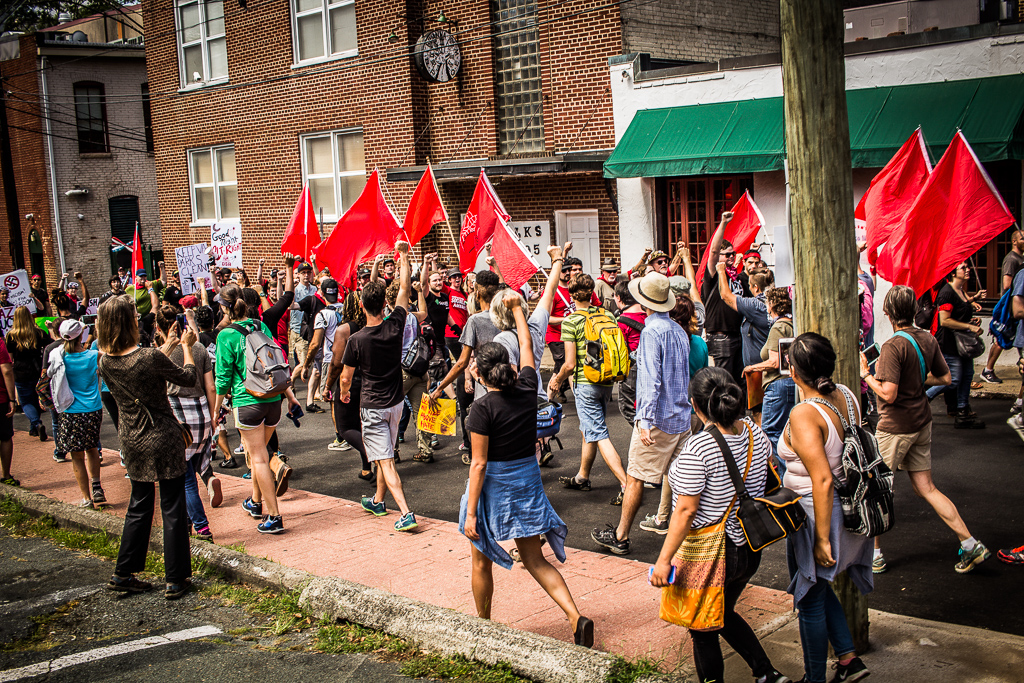
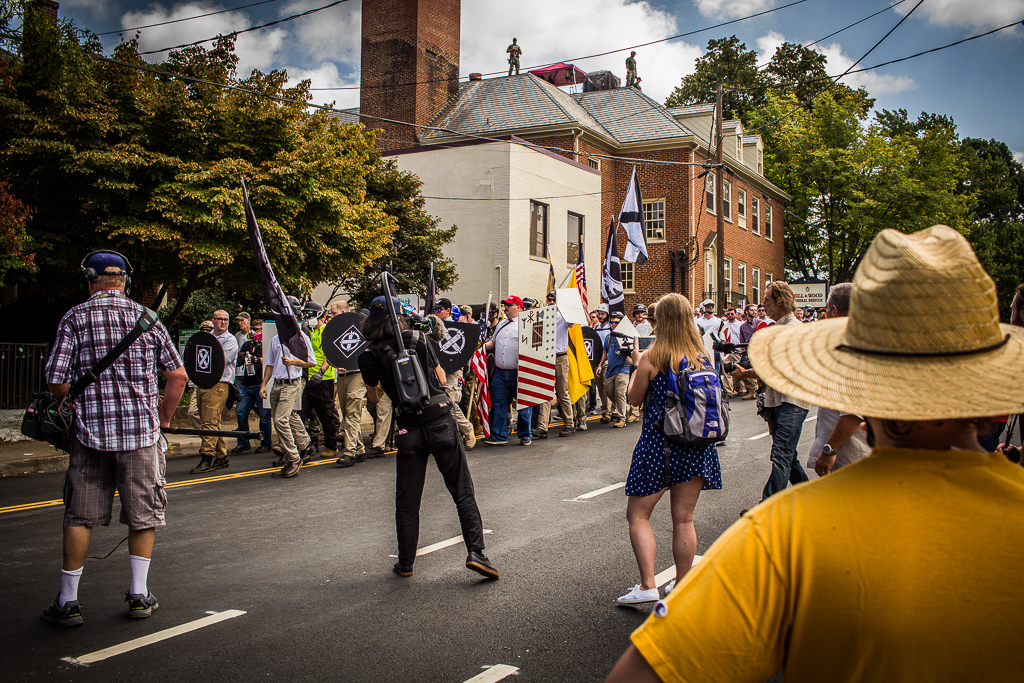
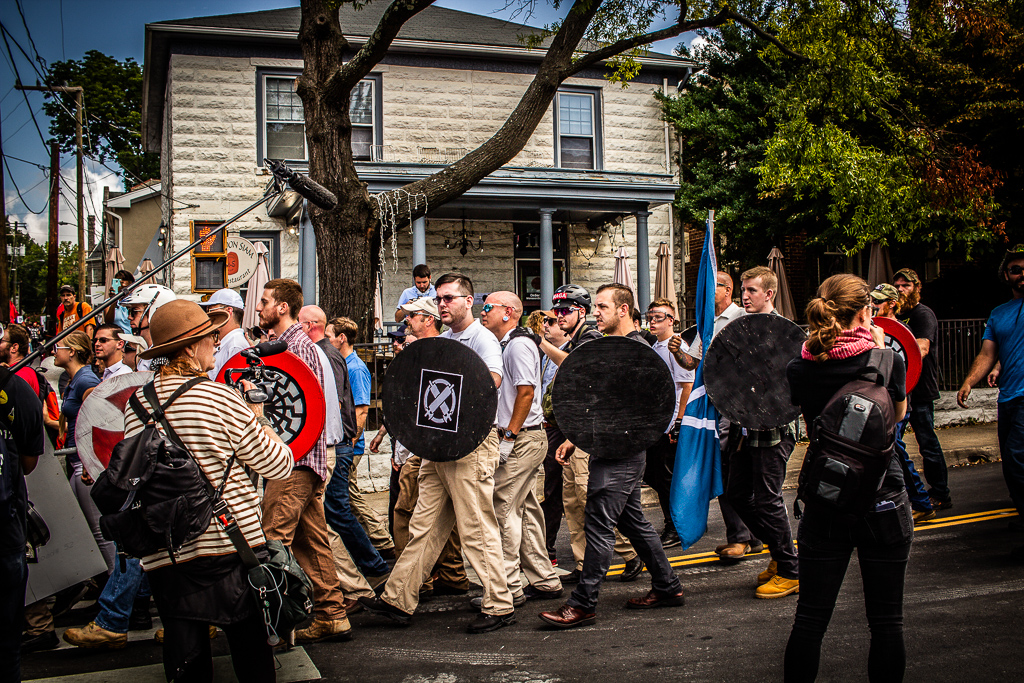
Helicopters flew in the air and police were blocking off roads. Businesses were vacant. We made our way up Market Street to Monsoon Siam, unable to realistically get much closer to the park without being part of one of the organized groups marching together.

Everyone was allowed to mix as they wished. It is only luck there wasn’t more violence during the height of of it. We did see many confrontations.

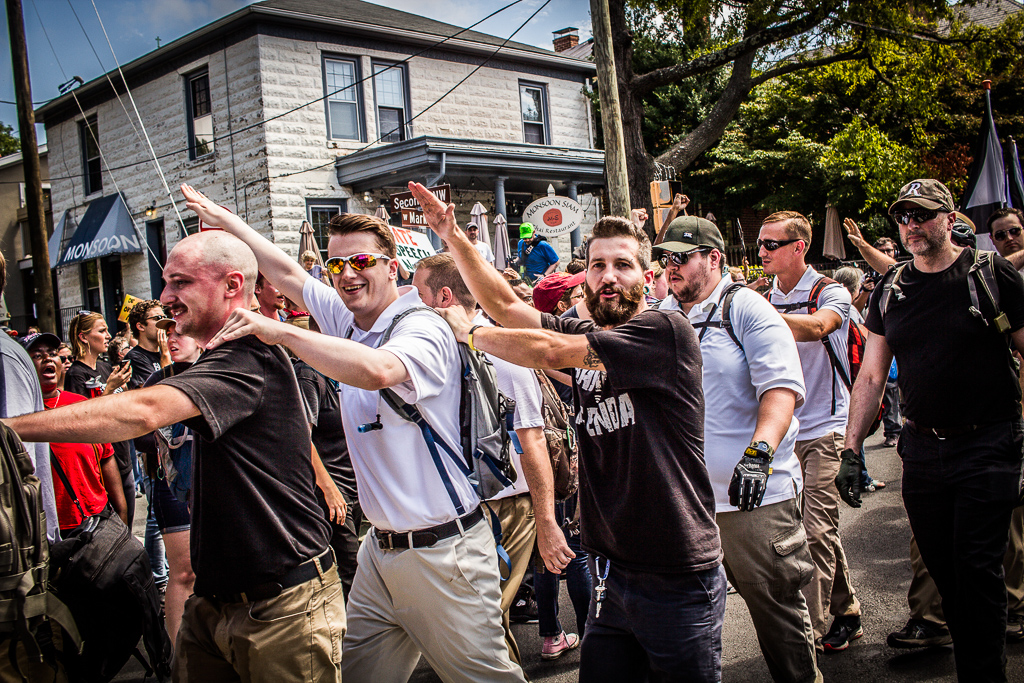


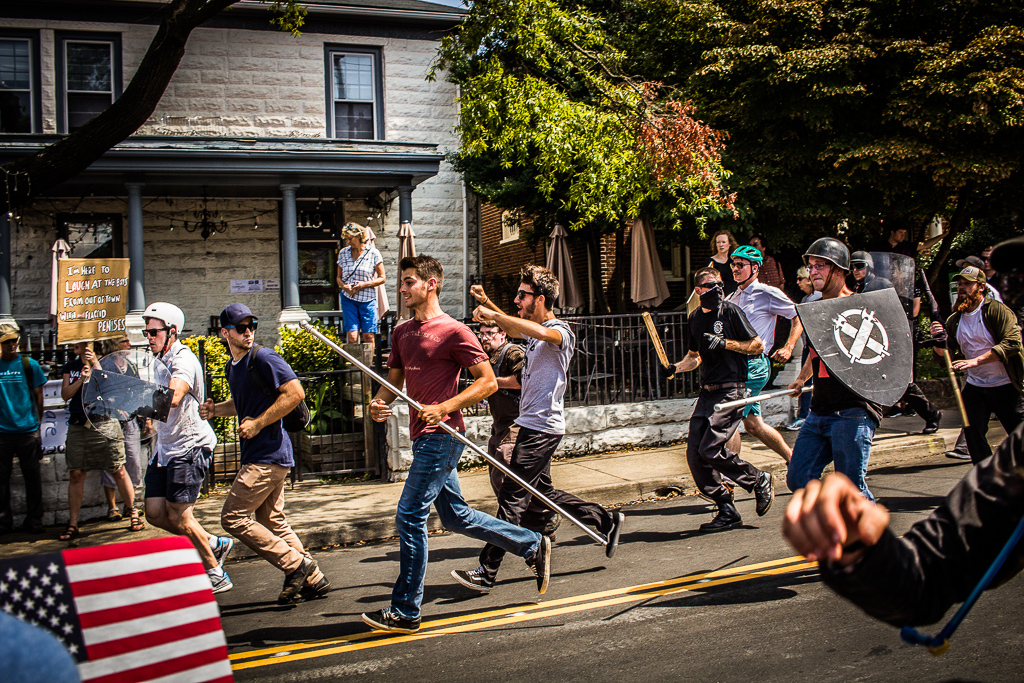
Almost every Unite the Right participant carried a shield or stick. There was glee. Anger. Hate.
Everyone else carried signs or cameras. Journalists conducted interviews. DSA and Black Lives Matter were the two largest factions in the crowd.


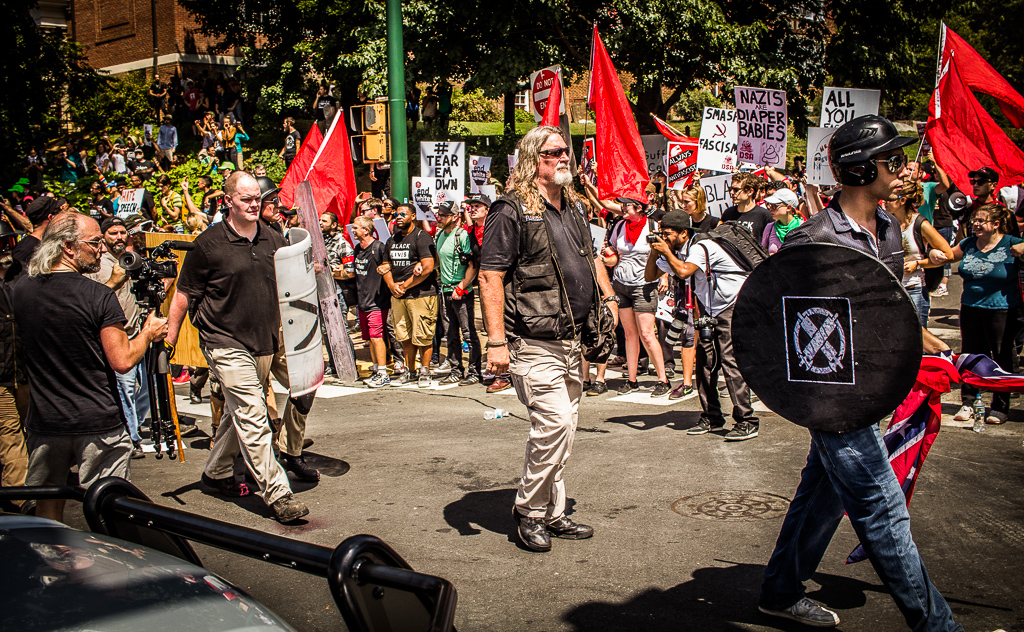
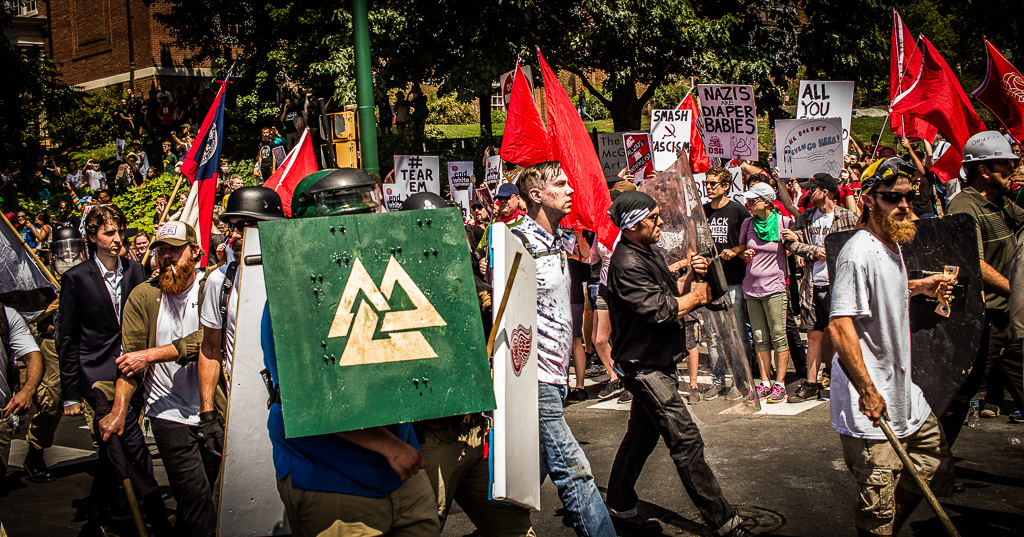
The main antagonists fled. The rest of us started to relax a bit and chat about what we just witnessed. It felt like a community meeting.



Our day would have been a lot different had we been on the other side of the park. We were never allowed to even get close. Our walk to the mall to try going around was immediately shut down by police.
The police made their way down from the park in a riot line. It looked absurd considering the violent people had already left.
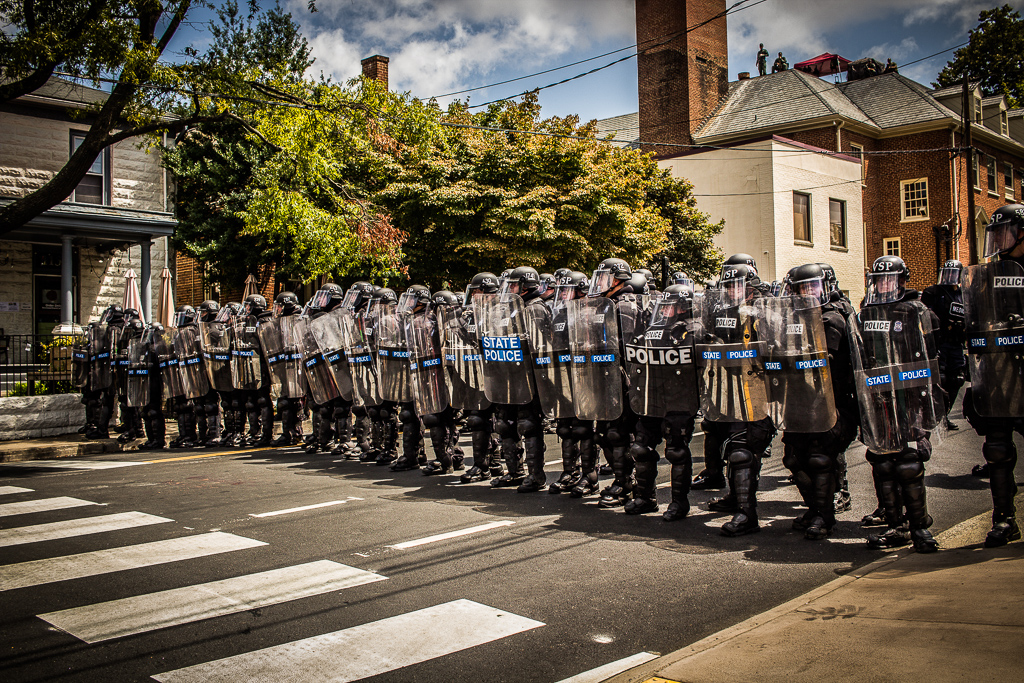
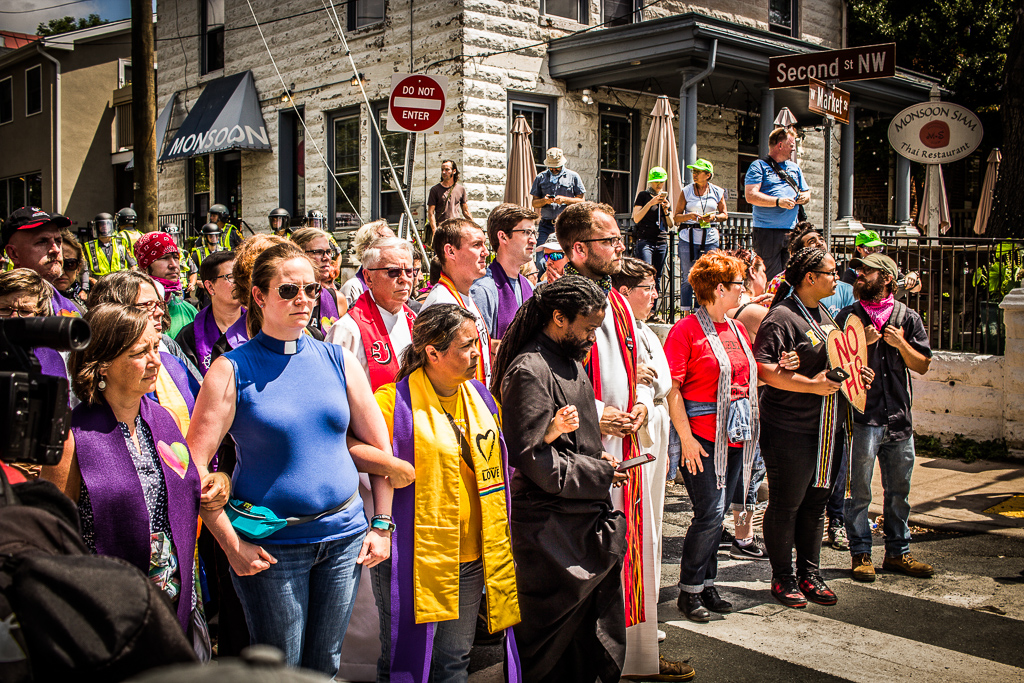


A militia came and took up a position in front of us. I don’t know what their exact ideological beliefs were, but one quickly explained they were there to protect the police from counter protestors.
My heart skipped a beat looking at his rifle and then the church groups he was worried about.
The militia set up a line in front of the actual police line.

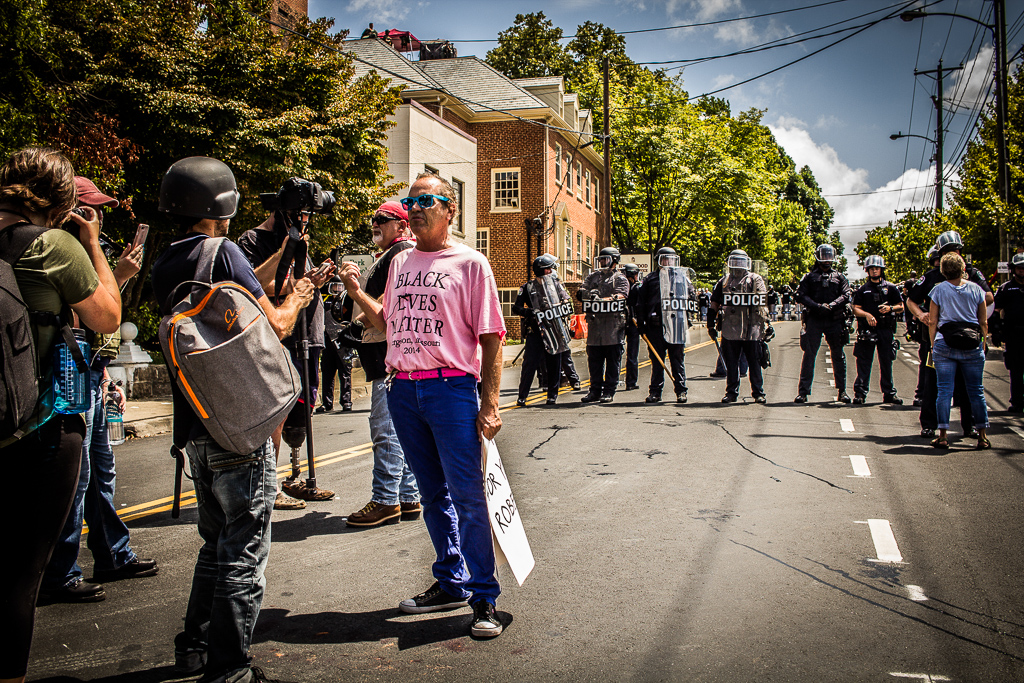


The police were not into it. They calmly explained to the militia that they required no assistance and needed them to leave.
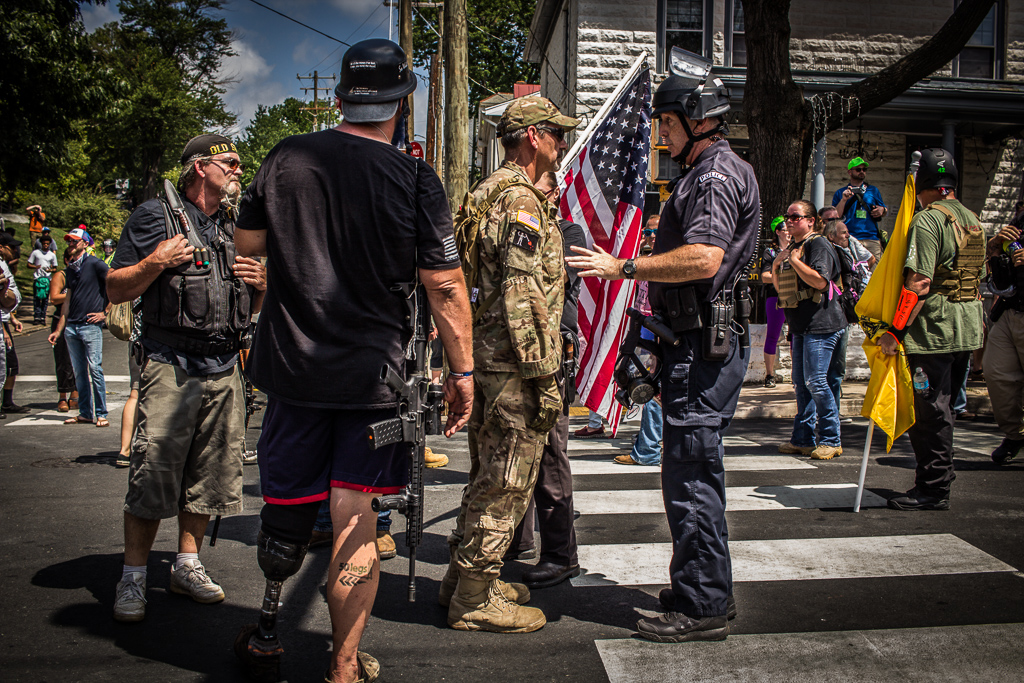
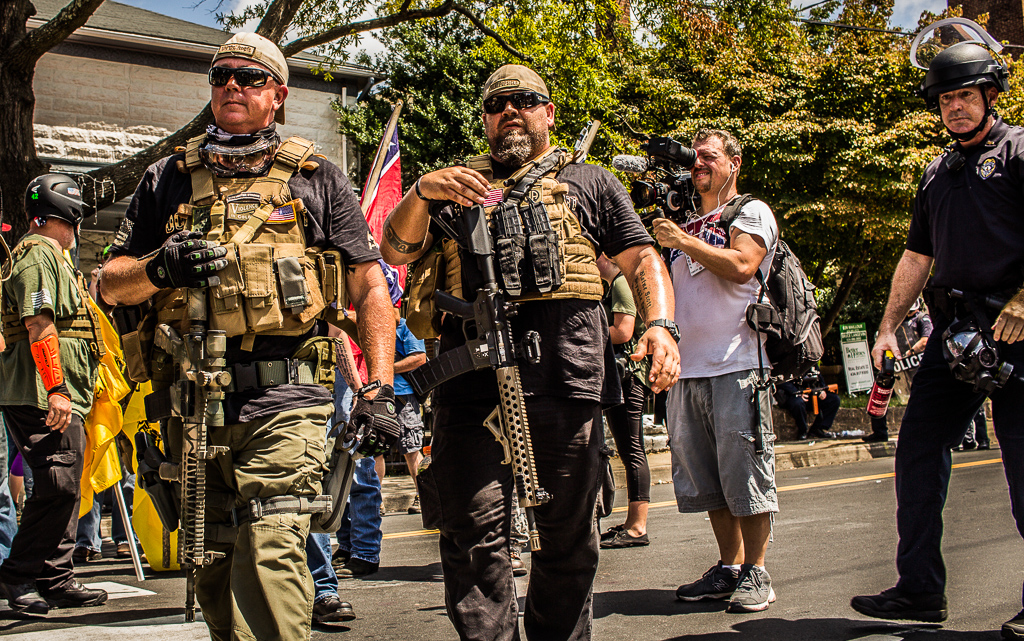
People seemed to be clearing out. We went home.
News of a terrorist driving a car through a crowd came out.
Many were hit.
Heather Heyer died.
I do not fully understand why.
- Why people would turn to their most horrible instincts.
- Why officials were not better prepared.
- Why warnings were ignored.
- Why people told me not to worry.
- Why the police were more polite to the militia than me.
- Why the nation didn’t stop when the President said there were good people on both sides.
- Why it still feels surreal.
It is difficult to study changing populations, realize the deep humanity all people share, and then watch others attempt to punt it all away. What we would lose if they won and excluded so many from fully participating in society…
Those who would rather burn it all down than grow, if I could make one argument directly to these racist groups, it is that they are personally missing out. No one wants to protest. Or at least based on the conversations I’ve had in Charlottesville, we would rather be making music, sharing meals, going on hikes, studying mathematics, inventing, exploring, improving our lives, and not thinking about a faction that insists we not do those things together. But we have to resist this.
It is so frustrating how much better things could be if we could focus on building instead of resisting racists. So much is given up.
We need to confront racist theories like we did monarchies and shitting in our drinking water. It is stupid. It is exhausting. It is preventing too many from living their best lives.
I know exactly which side I’m on. These photos will help me never forget.
I’m grateful to the people who were braver, smarter, and kinder than I was who started organizing groups on a side that deserves to be joined.
